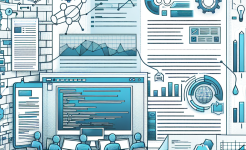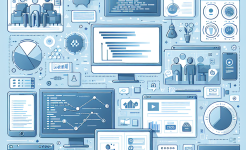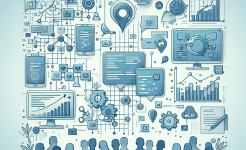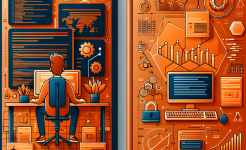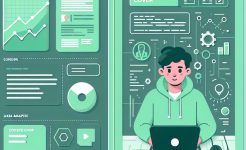In the realm of software development, two prominent approaches have emerged over the years: Scrum agile development and the traditional waterfall model. These two methodologies represent different paradigms in how projects are planned, executed, and managed. Understanding their differences is crucial for organizations to select the most suitable approach for their specific projects and business needs.
The waterfall model has been around for a long time and follows a sequential, linear approach. It starts with a detailed requirements gathering phase, followed by design, implementation, testing, and finally deployment. Each phase is completed before moving on to the next, and there is little room for deviation once a phase is finished. On the other hand, Scrum agile development is a more iterative and incremental approach. It emphasizes flexibility, collaboration, and the ability to adapt to changing requirements throughout the project lifecycle.
This article will delve into a detailed comparison of Scrum agile development and the traditional waterfall model, exploring their key characteristics, advantages, and limitations. By the end of this analysis, readers will have a better understanding of when to choose one approach over the other.
Key Characteristics
Waterfall Model
The waterfall model is characterized by its rigid sequential structure. In the requirements phase, all the requirements of the project are carefully elicited and documented. This is a crucial step as any oversight or misunderstanding at this stage can have significant consequences later on. Once the requirements are finalized, the design phase begins, where the overall architecture of the system is planned. This includes decisions about the software components, databases, and interfaces.
During the implementation phase, developers write the code according to the design specifications. This is followed by a comprehensive testing phase to identify and fix any bugs or issues. Finally, the system is deployed into the production environment. The waterfall model assumes that requirements are stable and well-defined from the start, and changes are difficult and costly to incorporate once the project is in progress.
Scrum Agile Development
Scrum agile development, in contrast, is based on short iterations called sprints. Each sprint typically lasts for 1 - 4 weeks. At the beginning of each sprint, the team selects a set of user stories (small, manageable units of work) from the product backlog. The product backlog is a prioritized list of all the features and requirements for the project.
During the sprint, the team works together to complete the selected user stories. There are daily stand-up meetings where team members communicate about their progress, any obstacles they face, and what they plan to do next. At the end of each sprint, there is a sprint review where the team presents the completed work to the stakeholders. This allows for early feedback and the ability to make adjustments to the project plan.
Advantages
Waterfall Model
One of the main advantages of the waterfall model is its predictability. Since each phase is well-defined and sequential, it is easier to estimate the time, cost, and resources required for the project. This makes it suitable for projects where the requirements are clear and stable, such as building a bridge or a large-scale infrastructure project.
The waterfall model also provides a clear documentation trail. Each phase produces a set of deliverables, which can be used for future reference, maintenance, and auditing purposes. This is especially important for projects that need to comply with strict regulations or standards.
Another advantage is that it is easier to manage large teams in a waterfall environment. Since the work is divided into distinct phases, it is clear who is responsible for each part of the project. This reduces the chances of confusion and overlap in responsibilities.
Scrum Agile Development
Scrum agile development offers high flexibility. It allows for changes to be incorporated easily throughout the project. As new requirements or changes in priorities arise, the product backlog can be updated, and the team can adjust their work accordingly. This makes it ideal for projects in dynamic environments where requirements are likely to change.
The iterative nature of Scrum also leads to early delivery of value. Since the team delivers a potentially shippable product at the end of each sprint, stakeholders can start using and providing feedback on the product earlier. This helps in validating the project direction and ensuring that the final product meets the users' needs.
Furthermore, Scrum promotes better collaboration within the team. The daily stand-up meetings, sprint planning, and sprint reviews encourage communication and teamwork. This results in a more engaged and motivated team, which can lead to higher quality work.
Limitations
Waterfall Model
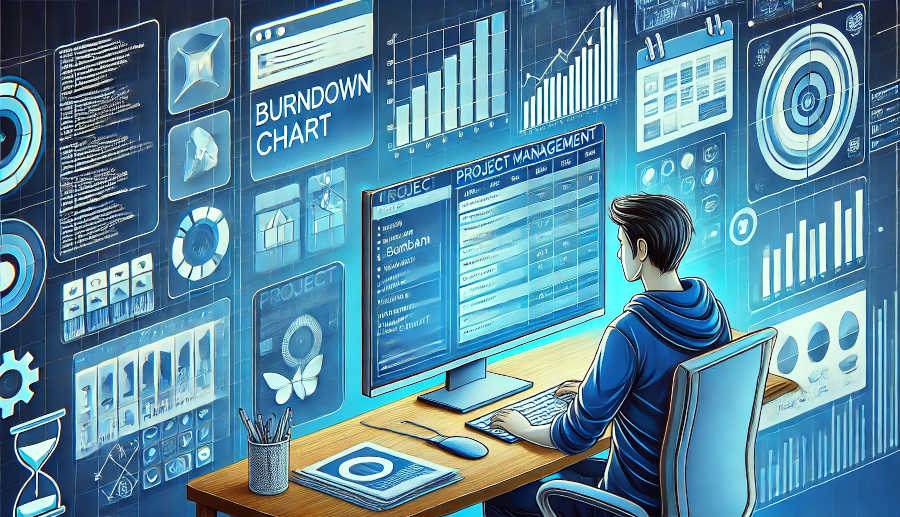
The biggest limitation of the waterfall model is its lack of flexibility. Once a phase is completed, it is very difficult and expensive to go back and make changes. If new requirements emerge during the development process, it may require a significant amount of rework, which can delay the project and increase costs.
The waterfall model also has a high risk of producing a product that does not meet the users' needs. Since the users do not get to see the product until the end of the development process, any misunderstandings or misinterpretations of the requirements may not be discovered until it is too late.
In addition, the waterfall model can be slow. The sequential nature of the phases means that the project has to wait for one phase to finish before starting the next, which can result in longer development cycles.
Scrum Agile Development
Scrum agile development can be challenging to manage in terms of scope. Since the product backlog is constantly evolving, it can be difficult to keep track of all the requirements and ensure that the project does not get overloaded with too many features.
The lack of a detailed upfront plan can also be a concern for some organizations. In Scrum, the focus is on delivering value in short iterations rather than having a comprehensive long-term plan. This may make it difficult for some stakeholders who prefer a more structured and predictable approach.
Another limitation is that Scrum requires a high level of commitment and collaboration from the team members. If the team is not fully engaged or lacks the necessary skills, it can lead to inefficiencies and delays in the project.
When to Choose Each Approach
Waterfall Model
The waterfall model is a good choice when the requirements of the project are well-defined and unlikely to change. For example, in the development of a software system for a highly regulated industry where the specifications are clearly laid out and there is little room for deviation.
It is also suitable for projects with a large budget and a long development cycle. The predictability of the waterfall model allows for better resource allocation and cost control over an extended period.
Projects that require a high level of documentation, such as those in the aerospace or defense industries, can benefit from the waterfall model's structured approach to documentation.
Scrum Agile Development
Scrum agile development is ideal for projects in fast-paced and dynamic environments where requirements are likely to change frequently. For example, in the development of mobile applications or web-based products where market trends and user needs can change rapidly.
Startups and small teams can also find Scrum beneficial as it allows for quick iterations and early delivery of value. This helps in getting feedback from customers and investors early on and making adjustments to the product.
Projects that require a high level of collaboration and innovation within the team are well-suited for Scrum. The iterative nature of the process encourages creativity and continuous improvement.
Conclusion
In conclusion, both Scrum agile development and the traditional waterfall model have their own unique characteristics, advantages, and limitations. The choice between the two depends on various factors such as the nature of the project, the stability of the requirements, the size of the team, and the organizational culture.
The waterfall model offers predictability, clear documentation, and is suitable for projects with well-defined requirements. However, it lacks flexibility and can be slow. On the other hand, Scrum agile development provides high flexibility, early delivery of value, and promotes collaboration. But it can be challenging to manage in terms of scope and may not be suitable for organizations that prefer a more structured approach.
Organizations should carefully evaluate these factors before deciding which approach to adopt for their projects. In some cases, a hybrid approach that combines elements of both Scrum and the waterfall model may be the most appropriate solution. By understanding the differences between these two methodologies, organizations can make informed decisions and increase the chances of project success.
ARTICLE TITLE :Comparison of Scrum agile development and traditional waterfall model ,AUTHOR :ITpmlib


